In simple words , the Ford Edsel was an automobile conceived way ahead of it's time. The automobile's sole purpose was to make significant inroads into the market share of both General Motors and Chrysler. It was also supposed to close the gap between itself and GM in the domestic American automotive market.
Unfortunately, The Ford Motor Company lost millions of dollars on the Edsel's development, manufacturing and marketing. The Edsel never gained popularity with American car buyers and the Edsel's sales figures were poor at best.
On Thursday, November 19, 1959, Ford announced the end of the Edsel. Ford Motor Co.lost $350 million, or the equivalent of $2,802,796,804 in 2014 dollars, on the Edsel program. At less than half the company's projected break-even point. Total Edsel sales were approximately 116,000. ] Only 118,287 Edsels were built, including 7,440 produced in Ontario.
In an effort to explain the Edsel's failure, historians have advanced several theories in an effort to explain the Edsel's failure.
Consumer Reports reported that poor workmanship was the Edsel's main problem. Popular culture often blames the car’s styling. The Edsel was "the wrong car at the wrong time," according to author and Edsel scholar, Jan Deutsch.
Analysts cite the weak internal support for the product inside Ford Motor Co.executive offices. Marketing experts hold the Edsel up as a great example of the corporate management's failure to understand American consumers. A further reason for its lack of popularity, The name of the car, Edsel, is also often cited as a further reason for its lack of popularity.
The Edsel has become a highly collectible item among vintage car hobbyists, more than half a century after its spectacular failure. A mint 1958-1960 convertible may sell for over $100,000, fewer than 10,000 Edsels survive and are considered valuable collectors’ items.
Friday, January 31, 2014
Thursday, January 30, 2014
THE FORD MODEL T, ALSO KNOWN AS "THE TIN LIZZIE"
When you hear the name Model T, what do you think of ?
A lot of people think of the first car manufactured in America, you're half right. Automobiles had already been built for decades. Their adoption had been limited, and they were still mostly scarce and expensive.
The first production Model T was produced on August 12, 1908. The car left the factory on September 27, 1908, at the Piquette Assembly Plant in Detroit, Michigan.The Model T made 1908 the historic year that the automobile became popular for the mass market. The Model T was produced by Henry Ford's Ford Motor Co. until May 27, 1927.
It was the first affordable automobile. The car that allowed travel for the common middle class American. The Ford Model T received the title as the world's most influential car of the twenty first century. in an international poll. This was due in large part to Ford's efficient fabrication, including assembly line production instead of individual hand crafting.
On May 26, 1927, Henry Ford watched the 15 millionth Model T Ford roll off the assembly line at his factory in Highland Park, Michigan.
There were several cars produced or prototyped by Henry Ford from the founding of the company in 1903 until the Model T was introduced.
Although he started with the Model A, there were not 19 production models (A through T); some were only prototypes. The production model immediately before the Model T was the Model S.
Ford wrote in his autobiography that in 1909 he told his management team that “Any customer can have a car painted any color that he wants so long as it is black”. However, in the first years of production from 1908 to 1913, the Model T was not available in black, but rather only grey, green, blue, and red. Green was available for the touring cars, town cars, coupes, and Landaulets. Grey was only available for the town cars, and red only for the touring cars. By 1912, all cars were being painted midnight blue with black fenders. It was only in 1914 that the "any color so long as it is black" policy was finally implemented.
The standard 4-seat open tourer of 1909 cost $850, in 1913, the price dropped to $550. In 1914, an assembly line worker could buy a Model T with four months' pay. By the 1920s, the price had fallen to $260 because of increasing efficiencies of assembly line technique and volume. The Model T was the first automobile mass-produced on moving assembly lines with completely interchangeable parts, marketed to the middle class.
***Where did the name "Tin Lizzie" originate from, In the early 1900s, car dealers would try to create publicity for their new automobiles by hosting car races. In 1922, a championship race was held in Pikes Peak, Colorado. Entered as one of the contestants was Noel Bullock and his Model T, named "Old Liz." Since Old Liz looked the worse for wear (it was unpainted and lacked a hood), many spectators compared Old Liz to a tin can. By the start of the race, the car had the new nickame of "Tin Lizzie." To everyone's surprise, Tin Lizzie won the race
*** About.Com, By Jennifer RosenbergAugust 15, 2007
Special thanks to Wikipedia, an excellent online source for information.
A lot of people think of the first car manufactured in America, you're half right. Automobiles had already been built for decades. Their adoption had been limited, and they were still mostly scarce and expensive.
The first production Model T was produced on August 12, 1908. The car left the factory on September 27, 1908, at the Piquette Assembly Plant in Detroit, Michigan.The Model T made 1908 the historic year that the automobile became popular for the mass market. The Model T was produced by Henry Ford's Ford Motor Co. until May 27, 1927.
It was the first affordable automobile. The car that allowed travel for the common middle class American. The Ford Model T received the title as the world's most influential car of the twenty first century. in an international poll. This was due in large part to Ford's efficient fabrication, including assembly line production instead of individual hand crafting.
On May 26, 1927, Henry Ford watched the 15 millionth Model T Ford roll off the assembly line at his factory in Highland Park, Michigan.
There were several cars produced or prototyped by Henry Ford from the founding of the company in 1903 until the Model T was introduced.
Although he started with the Model A, there were not 19 production models (A through T); some were only prototypes. The production model immediately before the Model T was the Model S.
Ford wrote in his autobiography that in 1909 he told his management team that “Any customer can have a car painted any color that he wants so long as it is black”. However, in the first years of production from 1908 to 1913, the Model T was not available in black, but rather only grey, green, blue, and red. Green was available for the touring cars, town cars, coupes, and Landaulets. Grey was only available for the town cars, and red only for the touring cars. By 1912, all cars were being painted midnight blue with black fenders. It was only in 1914 that the "any color so long as it is black" policy was finally implemented.
The standard 4-seat open tourer of 1909 cost $850, in 1913, the price dropped to $550. In 1914, an assembly line worker could buy a Model T with four months' pay. By the 1920s, the price had fallen to $260 because of increasing efficiencies of assembly line technique and volume. The Model T was the first automobile mass-produced on moving assembly lines with completely interchangeable parts, marketed to the middle class.
***Where did the name "Tin Lizzie" originate from, In the early 1900s, car dealers would try to create publicity for their new automobiles by hosting car races. In 1922, a championship race was held in Pikes Peak, Colorado. Entered as one of the contestants was Noel Bullock and his Model T, named "Old Liz." Since Old Liz looked the worse for wear (it was unpainted and lacked a hood), many spectators compared Old Liz to a tin can. By the start of the race, the car had the new nickame of "Tin Lizzie." To everyone's surprise, Tin Lizzie won the race
*** About.Com, By Jennifer RosenbergAugust 15, 2007
Special thanks to Wikipedia, an excellent online source for information.
Wednesday, January 29, 2014
'55 - '57 FORD THUNDERBIRD, THE CREATION OF THE PERSONAL LUXURY CAR
Not to be out done by Chevrolet's new sports car, the Corvette,
which was publicly unveiled in prototype form just a month before, and due to the fast thinking and quick work by The Ford Motor Co., the Thunderbird went from idea to prototype in about a year, being unveiled to the public at the Detroit Auto Show on February 20, 1954.
Production of the Thunderbird began on September 9, 1954, with the car beginning sales as a 1955 model on October 22, 1954 Much like it's rival, the Chevrolet Corvette, the classy Ford Thunderbird had a two-seat coupe/convertible layout.
To set itself apart from the Corvette, Ford billed the Thunderbird as a personal luxury car, highlighting the car's comfort and convenience features rather than its inherent sportiness.
The Thunderbird outsold the Corvette by more than 23-to-one for 1955 with 16,155 Thunderbirds sold against 700 Corvettes. It's no surprise that the Thunderbird sold exceptionally well in its first year.
Few changes were made to the car for 1956, with the Thunderbird considered a success. In order to make more storage room in the trunk, the most notable change was moving the spare tire to a continental-style rear bumper. An optional porthole in the removable roof was offered and was a big hit by buyers. The addition of the weight at the rear caused major steering problems.
In 1957 when the trunk was restyled and made slightly larger, the spare was moved back to the trunk. With a reshaped front bumper, a larger grille and tailfins, and larger tail lamps,the Thunderbird was revised for 1957.
The 312 cu in (5.1 L) V8 became the Thunderbird's standard engine. It now produced 245 horsepower. there were other even more powerful versions of the 312 cu in (5.1 L) V8, including one with two four-barrel Holley carburetors and another with a Paxton supercharger delivering 300 horsepower.
Ford Motor Company executives felt the car could do even better, leading to a substantial redesign of the car for 1958. Even though Ford was pleased to see sales of the Thunderbird rise to a record-breaking 21,380 units for 1957.
which was publicly unveiled in prototype form just a month before, and due to the fast thinking and quick work by The Ford Motor Co., the Thunderbird went from idea to prototype in about a year, being unveiled to the public at the Detroit Auto Show on February 20, 1954.
Production of the Thunderbird began on September 9, 1954, with the car beginning sales as a 1955 model on October 22, 1954 Much like it's rival, the Chevrolet Corvette, the classy Ford Thunderbird had a two-seat coupe/convertible layout.
To set itself apart from the Corvette, Ford billed the Thunderbird as a personal luxury car, highlighting the car's comfort and convenience features rather than its inherent sportiness.
The Thunderbird outsold the Corvette by more than 23-to-one for 1955 with 16,155 Thunderbirds sold against 700 Corvettes. It's no surprise that the Thunderbird sold exceptionally well in its first year.
Few changes were made to the car for 1956, with the Thunderbird considered a success. In order to make more storage room in the trunk, the most notable change was moving the spare tire to a continental-style rear bumper. An optional porthole in the removable roof was offered and was a big hit by buyers. The addition of the weight at the rear caused major steering problems.
In 1957 when the trunk was restyled and made slightly larger, the spare was moved back to the trunk. With a reshaped front bumper, a larger grille and tailfins, and larger tail lamps,the Thunderbird was revised for 1957.
The 312 cu in (5.1 L) V8 became the Thunderbird's standard engine. It now produced 245 horsepower. there were other even more powerful versions of the 312 cu in (5.1 L) V8, including one with two four-barrel Holley carburetors and another with a Paxton supercharger delivering 300 horsepower.
Ford Motor Company executives felt the car could do even better, leading to a substantial redesign of the car for 1958. Even though Ford was pleased to see sales of the Thunderbird rise to a record-breaking 21,380 units for 1957.
Tuesday, January 28, 2014
10 GREAT CARS OF GATSBY'S ROARING '20'S, PART TWO., By Tara Baukus Mello • Bankrate.com
As I stated in yesterdays blog, normally I like to write my own blogs. There are occasions where I find articles that are virtually impossible to compose on my own. I found an article that I'm going to publish with out much of my own material, I thought it was worth it to bring it to you. Special thanks to Bankrate.com &Tara Baukus Mello for a great story.
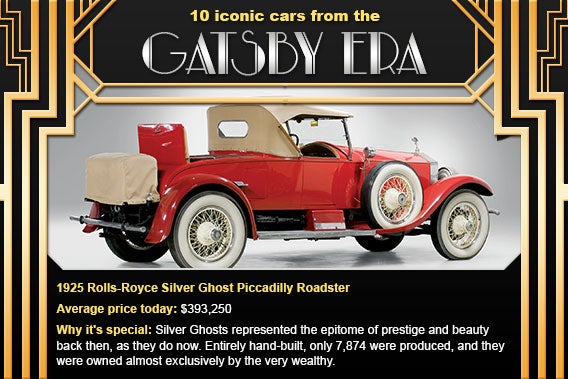
Photo courtesy of RM Auctions
1925 Rolls-Royce Silver Ghost Piccadilly Roadster
Average price today: $393,250
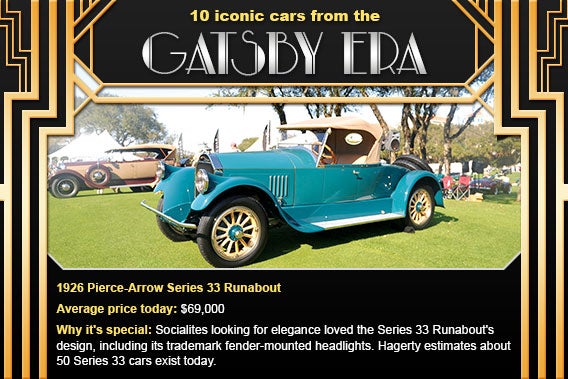
Photo courtesy of ConceptCarz.com
1926 Pierce-Arrow Series 33 Runabout
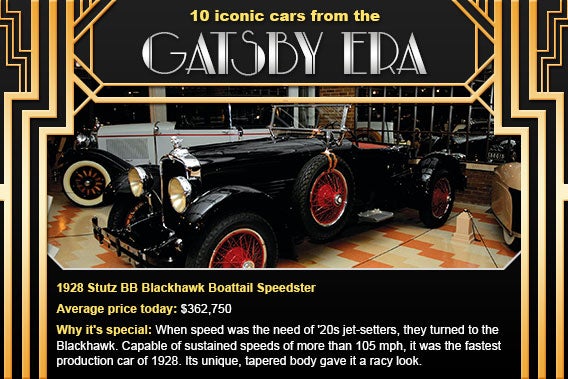
Photo courtesy of ConceptCarz.com
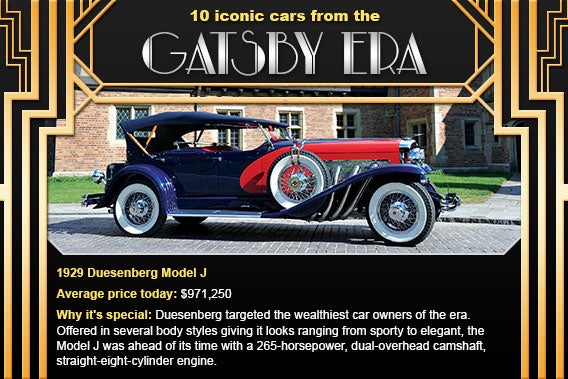


Photo courtesy of RM Auctions
1925 Rolls-Royce Silver Ghost Piccadilly Roadster
Average price today: $393,250

Photo courtesy of ConceptCarz.com
1926 Pierce-Arrow Series 33 Runabout
Average price today: $69,000
Photo courtesy of RM Auctions
1927 Isotta Fraschini Tipo 8A Boattail Tourer
Average price today: $466,500
Photo courtesy of ConceptCarz.com
1928 Stutz BB Blackhawk Boattail Speedster
Average price today: $362,750
Photo courtesy of ConceptCarz.com
1929 Duesenberg Model J
Average price today: $971,250
Monday, January 27, 2014
10 GREAT CARS OF GATSBY'S ROARING '20'S, PART ONE., By Tara Baukus Mello • Bankrate.com
Normally I like to write my own blogs. There are occasions where I find articles that are virtually impossible to compose on my own. I found an article that I'm going to publish with out much of my own material, I thought it was worth it to bring it to you. Special thanks to Bankrate.com &Tara Baukus Mello for a great story.
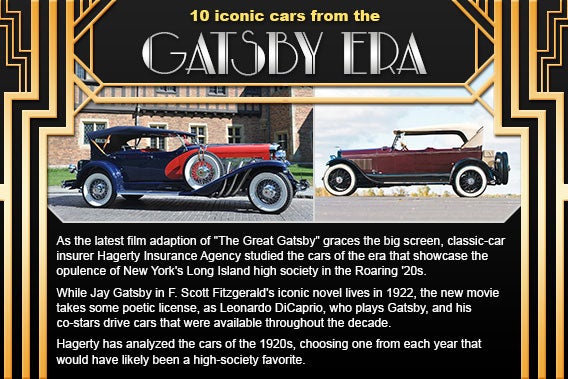
Dueseberg: photo courtesy of ConceptCarz.com, Lincoln: photo courtesy of RM Auctions
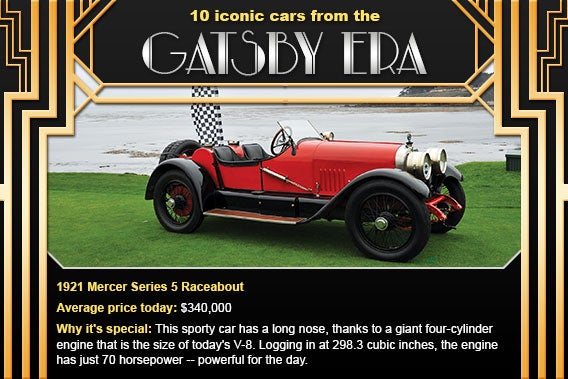
Photo courtesy of ConceptCarz.com
1921 Mercer Series 5 Raceabout
Average price today: $340,000
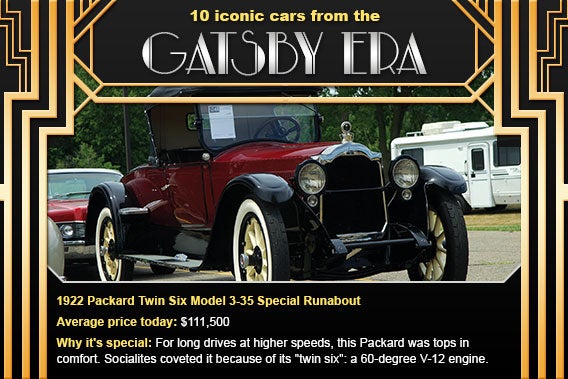
Photo courtesy of ConceptCarz.cars.
1922 Packard Twin Six Model 3-35 Special Runabout
Average price today: $111,500
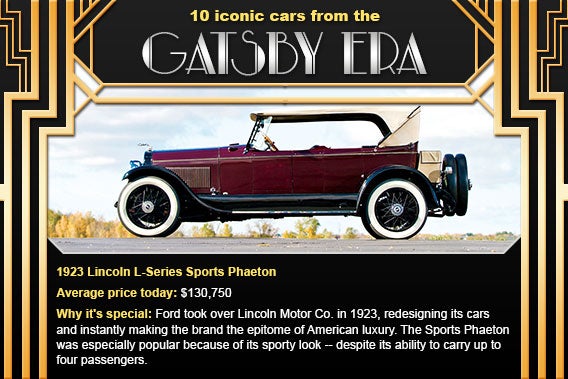
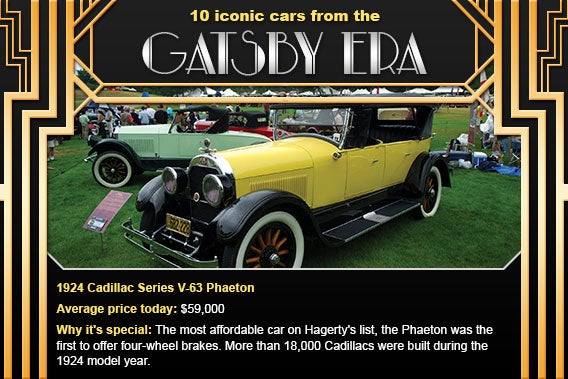
Photo courtesy of ConceptCarz.com

Dueseberg: photo courtesy of ConceptCarz.com, Lincoln: photo courtesy of RM Auctions

1921 Mercer Series 5 Raceabout
Average price today: $340,000

Photo courtesy of ConceptCarz.cars.
1922 Packard Twin Six Model 3-35 Special Runabout
Average price today: $111,500

Photo courtesy of RM Auctions
1923 Lincoln L-Series Sports Phaeton
Average price today: $130,750
Photo courtesy of ConceptCarz.com
1924 Cadillac Series V-63 Phaeton
Average price today: $59,000Sunday, January 26, 2014
THE 7 BEST AMERICAN MUSCLE CARS OF ALL TIME, PER BANKRATE .COM : PART 2
I had to think about this before I wrote this article, let's face it, you and I would come up with two completely different lists if we were to do it ourselves, with that said here I go. This is Bankrates list of the Seven Best Muscle Cars of all Time, Part 2.
EXIBIT D : 1969 Chevrolet Camaro ZL1
With fewer than 70 ever built, the '69 ZL1 not only had the most powerful Chevrolet engine offered to the public for decades, but it's the rarest production car Chevrolet ever made, bumping the price to $7,200.
Although it was officially rated at the regular 427's 430 horsepower, most independent testers pegged the output as being much higher.
Based on Chevrolet's iconic 427 V-8 engine, the ZL power plant had an aluminum block in place of the regular 427's iron one -- the first such Chevy production engine.
Today's 2013 Chevrolet Camaro ZL1 is named for the legendary 1969 Camaro ZL1, and for good reason.
EXIBIT E : 1969 Ford Mustang Boss 429
Enjoying a big-dog reputation, the Boss 429 wasn't a giant killer right out of the box. Its 429-cubic-inch V-8 engine delivered 375-horsepower, not shabby but dwarfed by others on this list.
Fewer than 1,400 were built between 1969 and 1970, making the Boss 429 a rare bird indeed. The Mustang Boss 429 is what you get when a carmaker needs to meet NASCAR regulations.
Ford farmed out its assembly to Michigan-based Kar Kraft. In appearance, very little distinguished the Boss 429 other than a hood scoop and trunk-mounted spoiler.What makes it truly notable is that it was basically hand-built. Because the engine wouldn't fit in a standard Mustang without extensive modifications.
EXIBIT F : 1968 Plymouth Road Runner Hemi.
With all the subtlety of a jar of nitroglycerin, the Plymouth Road Runner Hemi was pure explosive brawn.
It went a step further in capitalizing on the cartoon character's speedy image by developing a horn sound imitating the cartoon bird's "beep-beep,"Before unleashing the first Road Runner in 1968, Plymouth licensed the Road Runner name and likeness from Warner Brothers.
With a 425-horsepower, 426-cubic-inch Hemi V-8 engine, the Road Runner struck fear into the hearts of the Saturday night country-road, drag-racing crowd. It's one of the all-time great performance-car names.
Forget the niceties. Plymouth wanted a bare-knuckle, muscle-car fighter.
EXIBIT G : 1967 Pontiac GTO
Because of its historic value, the 1965 version could represent GTO on this list, but 1967 marked the first availability of ram air through a functional hood scoop on the GTO. It was a 400-cubic-inch V-8, delivering 360 horsepower.
Purists not tracing the era of muscle cars to the 1949 Oldsmobile Rocket 88 typically mark its beginning with the 1964 GTO.
Skirting a General Motors ban against putting big engines -- any engine larger than 330 cubic inches -- into small cars, Pontiac sneaked a 389-cubic-inch V-8 into its Tempest as an option called the GTO in 1964, according to MotorTrend.com.
Response was so huge that the car won over GM execs, paving the way for a stable of Chevrolet, Oldsmobile, Buick and Pontiac muscle cars.
Saturday, January 25, 2014
THE 7 BEST AMERICAN MUSCLE CARS OF ALL TIME, PER BANKRATE .COM : PART 1
I had to think about this before I wrote this article, let's face it, you and I would come up with two completely different lists if we were to do it ourselves, with that said here I go. This is Bankrates list of the Seven Best Muscle Cars of all Time, Part 1.
The are serious car people that would argue the beginning of the muscle car era began with the introduction of the 1949 Oldsmobile Rocket 88, others would argue that the true muscle car era began in 1965 and ended in 1970, when increasing insurance costs, excessive emissions regulations and skyrocketing gas prices brought the collapse of the muscle car era.
The true definition of a muscle car is a two-door car powered by a high-displacement engine typically found in a larger, full-size sedan. There is an argument to be made that, pony cars are not muscle cars, I tend to argue that point, and include these legends in their own right, in the muscle car list.
Please note that these cars are in no particular order, I'll leave the reader in charge of figuring out top to bottom of the list. :
EXIBIT A :1970 Chevrolet Chevelle SS 454
The 1970 Chevrolet Chevelle SS 454 has to be close to the top of the list. Chevrolet offered two versions of the 454-cubic-inch V-8. The LS5 generated a very impressive 360 horsepower, while the LS6 punched out a whopping 450 ponies.
A bulged hood was part of the design, alerting passers-by that something really special was happening under it. Chevelle's swept-back roof line provided the illusion of speed, even when idle.
Not only could the SS 454 blow the doors off most of its competitors, but it looked good doing it.
No other muscle car would equal the horsepower wallop of the 1970 SS 454. It's the LS6 version, with its Holley four-barrel carburetor, that put the SS 454 on this list.
EXIBIT B : The Hemi 'Cuda could certainly go toe to toe with the era's top-tier muscle cars, as the carmaker gave its muscle cars a suspension tailored to heavy-metal acceleration.
A shaker hood, featuring an air intake mounted on top of the engine's air cleaner that protrudes through a hole in the hood, was standard on the Hemi 'Cuda.
A variety of V-6 and V-8 engines powered the 1970 Plymouth Barracuda, but the big dog of the bunch was armed with the dual-carburetor, 426-cubic-inch Hemi that whipped up 425 horsepower.
EXIBIT C : 1970 Buick GSX Stage 1
1970 Buick GSX Stage 1, First appearing as an option on the 1965 Skylark, Gran Sport became a separate nameplate in 1967. By 1970, a 455-cubic-inch V-8 engine powered the Gran Sport. First appearing as an option on the 1965 Skylark, Gran Sport became a separate nameplate in 1967.
The GSX appearance package, first available for the 1970 Gran Sport 455, abandoned Buick's traditional, more dignified branding with a rear spoiler and body striping. Of the 687 GSXs built, 488 were ordered with the Stage 1 upgrade.
When Buick entered the muscle-car market, it was among the most
luxurious of the brands, and some of the most powerful. It produced a hefty 510 pounds-foot of torque. Those with Stage 1 tuning and engine tweaks delivered 360 horsepower to the rear wheels. There were quicker competitors, but the GSX truly was unique.
The are serious car people that would argue the beginning of the muscle car era began with the introduction of the 1949 Oldsmobile Rocket 88, others would argue that the true muscle car era began in 1965 and ended in 1970, when increasing insurance costs, excessive emissions regulations and skyrocketing gas prices brought the collapse of the muscle car era.
The true definition of a muscle car is a two-door car powered by a high-displacement engine typically found in a larger, full-size sedan. There is an argument to be made that, pony cars are not muscle cars, I tend to argue that point, and include these legends in their own right, in the muscle car list.
Please note that these cars are in no particular order, I'll leave the reader in charge of figuring out top to bottom of the list. :
EXIBIT A :1970 Chevrolet Chevelle SS 454
The 1970 Chevrolet Chevelle SS 454 has to be close to the top of the list. Chevrolet offered two versions of the 454-cubic-inch V-8. The LS5 generated a very impressive 360 horsepower, while the LS6 punched out a whopping 450 ponies.
A bulged hood was part of the design, alerting passers-by that something really special was happening under it. Chevelle's swept-back roof line provided the illusion of speed, even when idle.
Not only could the SS 454 blow the doors off most of its competitors, but it looked good doing it.
No other muscle car would equal the horsepower wallop of the 1970 SS 454. It's the LS6 version, with its Holley four-barrel carburetor, that put the SS 454 on this list.
EXIBIT B : The Hemi 'Cuda could certainly go toe to toe with the era's top-tier muscle cars, as the carmaker gave its muscle cars a suspension tailored to heavy-metal acceleration.
A shaker hood, featuring an air intake mounted on top of the engine's air cleaner that protrudes through a hole in the hood, was standard on the Hemi 'Cuda.
A variety of V-6 and V-8 engines powered the 1970 Plymouth Barracuda, but the big dog of the bunch was armed with the dual-carburetor, 426-cubic-inch Hemi that whipped up 425 horsepower.
EXIBIT C : 1970 Buick GSX Stage 1
1970 Buick GSX Stage 1, First appearing as an option on the 1965 Skylark, Gran Sport became a separate nameplate in 1967. By 1970, a 455-cubic-inch V-8 engine powered the Gran Sport. First appearing as an option on the 1965 Skylark, Gran Sport became a separate nameplate in 1967.
The GSX appearance package, first available for the 1970 Gran Sport 455, abandoned Buick's traditional, more dignified branding with a rear spoiler and body striping. Of the 687 GSXs built, 488 were ordered with the Stage 1 upgrade.
When Buick entered the muscle-car market, it was among the most
luxurious of the brands, and some of the most powerful. It produced a hefty 510 pounds-foot of torque. Those with Stage 1 tuning and engine tweaks delivered 360 horsepower to the rear wheels. There were quicker competitors, but the GSX truly was unique.
Friday, January 24, 2014
THE 1969 CHEVROLET INDY 500 PACE CAR, AN ICON OF SORTS
The 1969 Indy Pace Car was one of the most esthetic pace cars ever built.
The 1969 Camaro was picked as the Official Pace Car for the 1969 Indianapolis 500 and Official Car of the ‘500’ Festival. This was the second time in three years for Camaro since it had also been chosen as the 1967 Pace Car.
The 1969 pace cars were designed to be visible: Dover White RS/SS convertibles with Hugger Orange Z28 style stripes and orange houndstooth cloth seats. All were equipped with the recently released fresh air hood (aka: cowl hood).
In February of 1967,the pace car was announced to the media at a press conference in Indianapolis.The announcement was aided by a Display vehicle that showed off the pace car colors.
By providing the actual pace car, a backup pace car, a pace car replica (with air conditioning, power top, and show car finish) to be presented to the winner of the race, Chevrolet had a chance to show it's support of the race.
A fleet of courtesy vehicles included an additional 130 pace car replicas, 16 Impala station wagons, 18 pickups, two Suburbans, and one van, rounded out the support team of vehicles that Chevrolet provided.
The two pacers and the winner's car are believed to be in the front row and the Festival cars (identified by the Festival sticker on the rear quarter panel) are lined up behind them. One of these cars (#34, 9N609349) and a matched set of luggage were then presented to the Festival Queen.
Forty-three pace car replicas, all SS350 automatics, were provided to the “500” Festival Committee for use in the Festival Parade and other events. The two cars built to actually pace the race, the pace car and the backup car, were both ordered with the L89 aluminum head 375 hp 396 engines, automatic transmissions, power steering, sport-styled steering wheels, consoles, gauges, and AM radios.
The pace cars were driven by Jim Rathmann, winner of the 1960 Indy 500. Both pace cars were used to pace the race. The #1 car was used for the initial pace lap. The #2 car was used when the pace lap was rerun due to an accident. Both cars still survive.
The pace car convertibles had a sibling! It was a well kept secret for a number of years. . Paperwork documenting why the cars were made has not been found, but they were sold in the Southwest area of TX, OK, NM, LA, and AZ (and at least two Z10's were sold new in western TN).
There were a limited number of RS/SS coupes built via the option code Z10 that received the pace car style orange Z28 striping, essentially coupe versions of the pace car.
Most Z10’s have the L48 350/300 hp engine, but the 396 engines were optional. Most of the cars that did have the 396 were equipped with the L35 325hp engine, though there were a few L78 396/375 hp Z10’s. The 3-speed manual transmission was the base transmission, but, like most SS cars, most Z10's were optioned with an automatic or a 4-speed manual.
About half of the known Z10’s are manual and half are automatics. The Z10 was available with any other 69 Camaro option. A large percentage of Z10’s have air conditioning and several cars with vinyl tops have been found.
Five different interiors have been observed in Z10's. Approximately half of the cars received the ivory standard (code 727) interior. The other four interiors seen in Z10 cars are: black standard (711), black deluxe (712), black houndstooth (713), and ivory houndstooth (729).
There's no evidence that any Z10’s were built with the orange houndstooth interior found in the pace cars. The Z10’s were built at Norwood and Z10 was stamped on the cowl tag. All the cars were built between the third week of April (04C) and the first week of May (05A). No Los Angeles-built Z10's have ever been found and since LA was in the midst of a strike when most Z10's were built, it's very doubtful any were made there.
All Z10's are RS/SS’s, painted Dover white (code 50) with white rocker panels. SS396 cars had white tailpanels. Required options for the Z10 package were D80 spoilers, ZJ7 rally wheels, ZL2 special ducted hood, Z22 Rally Sport, and Z27 Super Sport.
Needles to say these pace cars are highly collectible items.
Thursday, January 23, 2014
1968 1/2 SHELBY COBRA MUSTANG GT500KR, ONE OF CARROLL SHELBY'S BEST
When you here the name Carroll Shelby, what is the first thing that comes to your mind? The AC Cobra, sometimes referred to as the Shelby Cobra ? The Ford Mustang Shelby Cobra ? The legendary race car driver in his own right ?
I say all of the above describe a man who was an automotive pioneer, and contributed and devoted a life time to the automotive Industry.
One of Carroll Shelby's finest achievements was the 1968 1/2 Shelby Cobra Mustang GT500KR, this automobile gave the legendary pony car bragging rights as a Muscle Car. In 1967 the Ford Mustang morphed into a muscle car. crossing the threshold of muscle car engines, 1967 offered a de-tuned race 427 and Police Interceptor 428, leaving 1968 with the draconian task of making something even bigger and more sinister.
With the return of the 427 & the 428 in 1968, Ford introduced the legendary 428 Cobra Jet in April of that year, that meant the Cobra Jet became the lead engine mid way through the car’s production, replacing the Police Interceptor option, for the GT500s.
A handful of ’68 Shelby GT500s were equipped with 427ci engines from the factory. These were manufactured prior to the 427 engine option being discontinued for the model and the KR model, replacing the regular GT500s.The Shelby GT500s received a new engine mid way through the model year, and they also acquired a “KR” suffix, which designated each car as a “King of the Road” model.
Although factory specifications put this engine at just 335bhp at 5,600RPM, it is estimated that the engine was capable of producing more in the 400bhp range
I say all of the above describe a man who was an automotive pioneer, and contributed and devoted a life time to the automotive Industry.
One of Carroll Shelby's finest achievements was the 1968 1/2 Shelby Cobra Mustang GT500KR, this automobile gave the legendary pony car bragging rights as a Muscle Car. In 1967 the Ford Mustang morphed into a muscle car. crossing the threshold of muscle car engines, 1967 offered a de-tuned race 427 and Police Interceptor 428, leaving 1968 with the draconian task of making something even bigger and more sinister.
With the return of the 427 & the 428 in 1968, Ford introduced the legendary 428 Cobra Jet in April of that year, that meant the Cobra Jet became the lead engine mid way through the car’s production, replacing the Police Interceptor option, for the GT500s.
A handful of ’68 Shelby GT500s were equipped with 427ci engines from the factory. These were manufactured prior to the 427 engine option being discontinued for the model and the KR model, replacing the regular GT500s.The Shelby GT500s received a new engine mid way through the model year, and they also acquired a “KR” suffix, which designated each car as a “King of the Road” model.
Rated at just 335bhp, the Cobra Jet engine fitted between the GT500-KR’s front fenders is believed to actually produce a hearty 400+hp.
Although factory specifications put this engine at just 335bhp at 5,600RPM, it is estimated that the engine was capable of producing more in the 400bhp range
A total of 4,451 Shelby Mustang GTs were produced, 1,251 of those being GT500-KR models. Within that 1,251, just 933 were fastback models while a measly 318 were convertibles. If you wanted a GT500-KR fastback, it would’ve cost you $4,472 while a convertible model would have set you back $4,594. This is quite the jump from the factory $2,602 and $2,814 price tags associated with base ’68 fastback and convertible models.
Wednesday, January 22, 2014
RICK HENDRICK & BARRETT-JACKSON COLLECTOR CAR AUCTION, THEY FIT LIKE A GLOVE
NACAR'S premier car owner and the crown jewel auction house in the collector car business are a match made in heaven.
Rick Hendrick, probably the most successful car owner in NASCAR, and Barrett-Jackson, the gold standard in the collector car auction business, are the perfect fit.
What is it that makes this duo so right for each other?
Simple, Rick Hendrick has a forever burning passion, some might say a sweet tooth, for collectible cars. And to go with that, he also has the financial means to fuel that passion.
Barrett-Jackson, headed by CEO Craig Jackson, operates the Barrett-Jackson Auction Co., which is the leader in the collector car auction business, and the yard stick by which all other collector car auction co.'s are measured.
Rick Hendrick brought 21 collector cars to the Scottsdale 2014 Auction. Every car he brought to auction sold for a total of $1,455,000.
That money never made it to Rick's pocket. Here is a list of cars Mr. Hendrick took home with him :
The first production 2015 Chevrolet Camaro Z/28 for $650,000, with all the money going to charity, specifically Cornerstone Schools in Detroit.
$198,000 for a 1968 Sox & Martin Hemi Barracuda race car in the team's iconic red, white and blue livery. as a youngster Hendrick was a huge fan of drag racing legends Sox & Martin.
Hendrick also bought a rare yellow 1968 Shelby GT 500 KR convertible, one of only 43 made in this color, for $308,000.
There were other purchases made by Hendrick but his biggest purchase was the four-vehicle "Snake and Mongoose" Hot Wheels set owned by Don Prudhomme --€” Two race haulers, Prudhomme's fully functional 1970 Plymouth Barracuda Funny Car and Tom McEwen's 1972 Plymouth Duster Funny Car show car.
The package was bid to $1 million and initially was a no-sale on the block, but Hendrick and Prudhomme privately negotiated a sale afterwards. Barrett-Jackson's website lists the sale price as $1 million total.
Rick Hendrick was like a kid in a candy store, and he deserved it. He has had his ups and downs over the last 30 + years, he deserves to share in the spoils that he has cultivated over the years.
Mr. Hendrick, I would have done the same thing.
Rick Hendrick, probably the most successful car owner in NASCAR, and Barrett-Jackson, the gold standard in the collector car auction business, are the perfect fit.
What is it that makes this duo so right for each other?
Simple, Rick Hendrick has a forever burning passion, some might say a sweet tooth, for collectible cars. And to go with that, he also has the financial means to fuel that passion.
Barrett-Jackson, headed by CEO Craig Jackson, operates the Barrett-Jackson Auction Co., which is the leader in the collector car auction business, and the yard stick by which all other collector car auction co.'s are measured.
Rick Hendrick brought 21 collector cars to the Scottsdale 2014 Auction. Every car he brought to auction sold for a total of $1,455,000.
That money never made it to Rick's pocket. Here is a list of cars Mr. Hendrick took home with him :
The first production 2015 Chevrolet Camaro Z/28 for $650,000, with all the money going to charity, specifically Cornerstone Schools in Detroit.
$198,000 for a 1968 Sox & Martin Hemi Barracuda race car in the team's iconic red, white and blue livery. as a youngster Hendrick was a huge fan of drag racing legends Sox & Martin.
Hendrick also bought a rare yellow 1968 Shelby GT 500 KR convertible, one of only 43 made in this color, for $308,000.
There were other purchases made by Hendrick but his biggest purchase was the four-vehicle "Snake and Mongoose" Hot Wheels set owned by Don Prudhomme --€” Two race haulers, Prudhomme's fully functional 1970 Plymouth Barracuda Funny Car and Tom McEwen's 1972 Plymouth Duster Funny Car show car.
The package was bid to $1 million and initially was a no-sale on the block, but Hendrick and Prudhomme privately negotiated a sale afterwards. Barrett-Jackson's website lists the sale price as $1 million total.
Rick Hendrick was like a kid in a candy store, and he deserved it. He has had his ups and downs over the last 30 + years, he deserves to share in the spoils that he has cultivated over the years.
Mr. Hendrick, I would have done the same thing.
Subscribe to:
Posts (Atom)
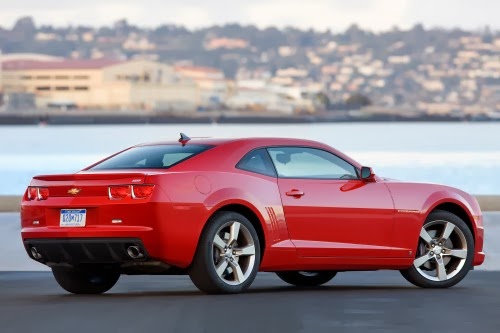

.jpg)

.png)
.png)
.png)
.png)

.jpg)

.png)
.png)
.png)

.jpg)
.jpg)

.jpg)
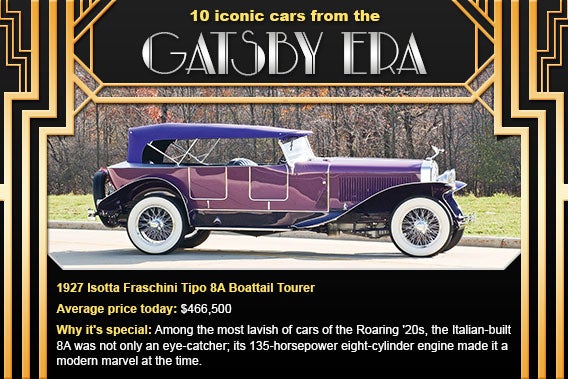
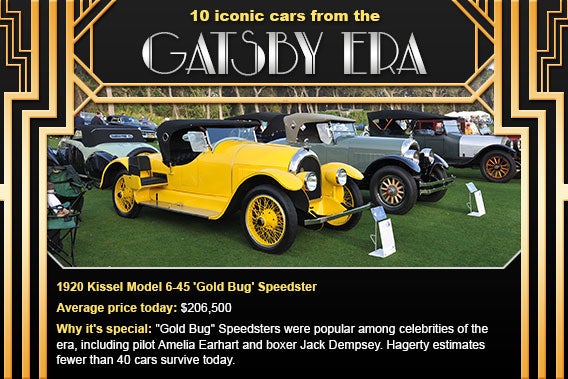






.jpg)






.jpg)
.jpg)
.jpg)
.jpg)



